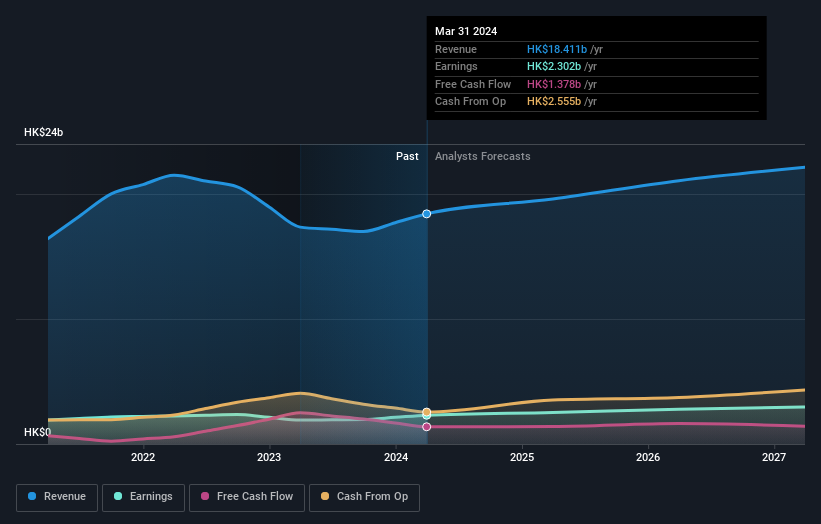- Hong Kong
- /
- Consumer Durables
- /
- SEHK:1999
CEO Man Li Wong, Man Wah Holdings Limited's (HKG:1999) largest shareholder sees value of holdings go down 4.7% after recent drop

Key Insights
- Significant insider control over Man Wah Holdings implies vested interests in company growth
- Man Li Wong owns 62% of the company
- Institutions own 15% of Man Wah Holdings
If you want to know who really controls Man Wah Holdings Limited (HKG:1999), then you'll have to look at the makeup of its share registry. We can see that individual insiders own the lion's share in the company with 63% ownership. That is, the group stands to benefit the most if the stock rises (or lose the most if there is a downturn).
And following last week's 4.7% decline in share price, insiders suffered the most losses.
In the chart below, we zoom in on the different ownership groups of Man Wah Holdings.
View our latest analysis for Man Wah Holdings

What Does The Institutional Ownership Tell Us About Man Wah Holdings?
Institutional investors commonly compare their own returns to the returns of a commonly followed index. So they generally do consider buying larger companies that are included in the relevant benchmark index.
We can see that Man Wah Holdings does have institutional investors; and they hold a good portion of the company's stock. This implies the analysts working for those institutions have looked at the stock and they like it. But just like anyone else, they could be wrong. It is not uncommon to see a big share price drop if two large institutional investors try to sell out of a stock at the same time. So it is worth checking the past earnings trajectory of Man Wah Holdings, (below). Of course, keep in mind that there are other factors to consider, too.

Hedge funds don't have many shares in Man Wah Holdings. With a 62% stake, CEO Man Li Wong is the largest shareholder. This essentially means that they have significant control over the outcome or future of the company, which is why insider ownership is usually looked upon favourably by prospective buyers. For context, the second largest shareholder holds about 1.7% of the shares outstanding, followed by an ownership of 1.5% by the third-largest shareholder.
While it makes sense to study institutional ownership data for a company, it also makes sense to study analyst sentiments to know which way the wind is blowing. Quite a few analysts cover the stock, so you could look into forecast growth quite easily.
Insider Ownership Of Man Wah Holdings
The definition of an insider can differ slightly between different countries, but members of the board of directors always count. Management ultimately answers to the board. However, it is not uncommon for managers to be executive board members, especially if they are a founder or the CEO.
Most consider insider ownership a positive because it can indicate the board is well aligned with other shareholders. However, on some occasions too much power is concentrated within this group.
Our information suggests that insiders own more than half of Man Wah Holdings Limited. This gives them effective control of the company. That means insiders have a very meaningful HK$11b stake in this HK$17b business. Most would argue this is a positive, showing strong alignment with shareholders. You can click here to see if they have been selling down their stake.
General Public Ownership
The general public-- including retail investors -- own 22% stake in the company, and hence can't easily be ignored. This size of ownership, while considerable, may not be enough to change company policy if the decision is not in sync with other large shareholders.
Next Steps:
I find it very interesting to look at who exactly owns a company. But to truly gain insight, we need to consider other information, too. Take risks for example - Man Wah Holdings has 1 warning sign we think you should be aware of.
Ultimately the future is most important. You can access this free report on analyst forecasts for the company.
NB: Figures in this article are calculated using data from the last twelve months, which refer to the 12-month period ending on the last date of the month the financial statement is dated. This may not be consistent with full year annual report figures.
New: Manage All Your Stock Portfolios in One Place
We've created the ultimate portfolio companion for stock investors, and it's free.
• Connect an unlimited number of Portfolios and see your total in one currency
• Be alerted to new Warning Signs or Risks via email or mobile
• Track the Fair Value of your stocks
Have feedback on this article? Concerned about the content? Get in touch with us directly. Alternatively, email editorial-team (at) simplywallst.com.
This article by Simply Wall St is general in nature. We provide commentary based on historical data and analyst forecasts only using an unbiased methodology and our articles are not intended to be financial advice. It does not constitute a recommendation to buy or sell any stock, and does not take account of your objectives, or your financial situation. We aim to bring you long-term focused analysis driven by fundamental data. Note that our analysis may not factor in the latest price-sensitive company announcements or qualitative material. Simply Wall St has no position in any stocks mentioned.
About SEHK:1999
Man Wah Holdings
An investment holding company, engages in the manufacture, wholesale, trading, and distribution of sofas and ancillary products in the People's Republic of China, Europe, Vietnam, Mexico, and internationally.
Flawless balance sheet with solid track record and pays a dividend.


